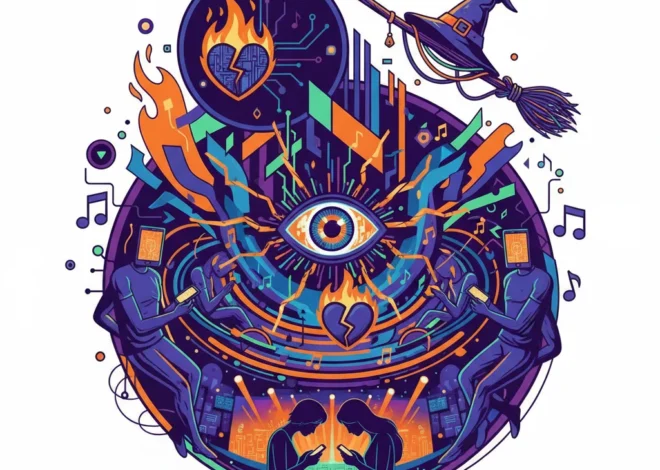
Roblox Under Fire: The High-Stakes Battle Between Innovation, AI, and Platform Safety
It’s a digital universe bigger than most countries. With over 70 million daily active users, Roblox isn’t just a game; it’s a sprawling metaverse built on user-generated content, a testament to the power of creative freedom and community. But this digital utopia is facing a harsh reality check. The state of Texas has filed a lawsuit against the platform, leveling explosive accusations that Roblox prioritized “profits over the safety of its young users.”
The lawsuit alleges the platform has failed to adequately protect children from sexual predators, a claim Roblox vehemently denies, stating it is “disappointed” by the legal action based on what it calls “misrepresentations and sensationalised claims.”
This legal showdown is more than just a headline; it’s a flashpoint in a critical, industry-wide debate. It forces us to confront a multi-billion-dollar question: In these vast, user-built worlds, where does a platform’s responsibility begin and end? And as we lean more heavily on technology for answers, is the sophisticated arsenal of artificial intelligence, machine learning, and automation a silver bullet for safety, or just one part of a far more complex solution?
In this deep dive, we’ll unpack the layers of this landmark case, explore the immense technological challenges of moderating a metaverse at scale, and analyze the critical role of cybersecurity and innovation in building the digital worlds of tomorrow.
The Core of the Conflict: A Lawsuit with Industry-Wide Implications
At its heart, the lawsuit filed by Texas Attorney General Ken Paxton centers on the claim that Roblox’s business model and safety mechanisms are insufficient to prevent child exploitation. The allegations suggest that despite knowing about the risks, the company failed to implement robust enough protections, effectively creating a dangerous environment for its predominantly young user base.
This legal challenge strikes at the very foundation of many modern tech platforms, which operate under legal frameworks like Section 230 of the Communications Decency Act in the U.S. This legislation has historically shielded online platforms from liability for content posted by their users. However, prosecutors and lawmakers are increasingly testing the boundaries of this protection, arguing that platforms are not merely passive conduits but active curators of their digital spaces, and thus bear greater responsibility.
Roblox, for its part, invests heavily in safety, reportedly employing thousands of human moderators and deploying advanced AI systems. The company’s defense rests on the argument that it is actively and effectively fighting a difficult battle against bad actors. This lawsuit, therefore, isn’t just about Roblox; it’s a bellwether for the entire user-generated content (UGC) industry, from social media giants to emerging startups in the metaverse space.
The New Tech Arms Race: Inside China’s EV Blitz and the US Scramble for Critical Minerals
The Scale of the Challenge: Moderating a Digital Nation
To understand the difficulty of Roblox’s task, one must first grasp its sheer scale. We’re not talking about a simple chatroom. Roblox is a constellation of millions of individual “experiences” (games and social spaces) created by its users. Moderation must cover:
- Live Chat: Billions of messages exchanged daily, filled with slang, “leetspeak,” and coded language.
- User-Generated Assets: Every shirt, character model, building, and texture uploaded by users must be scanned for inappropriate content. This involves complex image and 3D model analysis.
- Game Logic: The underlying programming of an experience could be used to create scenarios that violate policies, a far more abstract and difficult thing to police automatically.
- Behavioral Patterns: Identifying sophisticated grooming or bullying tactics requires analyzing patterns of interaction over time, not just single messages.
This torrent of data is managed through a complex “Trust & Safety” stack, a combination of cutting-edge software and human expertise. This entire operation runs on a massive, scalable cloud infrastructure, often leveraging specialized SaaS (Software as a Service) tools for specific moderation tasks. It’s a high-tech war fought on millions of fronts simultaneously.
The Technological Arsenal: A Double-Edged Sword
Platforms like Roblox are not fighting this war with human moderators alone. They deploy a sophisticated array of technology, primarily driven by artificial intelligence, to police their platforms at scale. However, each tool comes with its own set of strengths and weaknesses.
Here’s a breakdown of the common technologies used in content moderation and the trade-offs involved:
| Moderation Technique | How It Works | Pros | Cons |
|---|---|---|---|
| Keyword & Hash Filtering | Blocks or flags predefined words, phrases, or known bad image files (hashes). | Extremely fast, low computational cost, effective for obvious violations. | Easily bypassed (e.g., “pr0n”), lacks context, high rate of false positives. |
| AI/ML Text Analysis (NLP) | Uses machine learning models to understand the context, sentiment, and intent behind text to detect nuances like bullying or grooming language. | Can catch sophisticated violations, adapts over time, understands context better than simple filters. | Computationally expensive, requires vast and diverse training data, can inherit biases, can be fooled by novel adversarial phrasing. |
| Computer Vision & 3D Model Analysis | An AI scans images, videos, and 3D asset files for prohibited content like nudity, violence, or hate symbols. | Highly scalable for visual content, can detect violations that humans might miss in a large volume of data. | Struggles with abstract concepts, can be fooled by altered images, and has difficulty interpreting context (e.g., historical vs. hateful symbol). |
| Human Review | Trained human moderators manually review content flagged by automation or users. | The gold standard for understanding nuance and context. Provides crucial feedback to improve AI models. | Slow, expensive, not scalable for 100% of content, and can be psychologically damaging for moderators, as numerous reports have shown. |
Beyond the Code: The Economics and Ethics of Safety
The allegation of putting “profits over safety” forces a difficult conversation about the business of trust. A robust Trust & Safety operation is phenomenally expensive. It requires hiring thousands of moderators, investing in massive cloud computing resources for AI models, and retaining top-tier engineering and data science talent.
For a publicly traded company like Roblox, these are significant line items on a balance sheet. The cynical view is that companies invest the minimum amount required to avoid catastrophic PR events and regulatory fines. The more optimistic view is that trust is the ultimate currency; a platform perceived as unsafe will eventually lose its users and creators, destroying long-term value. According to the 2023 Edelman Trust Barometer, business is the only institution seen as both competent and ethical, a fragile trust that can be shattered by scandals like these.
This is where innovation becomes key. The field of “Trust & Safety as a Service” is booming, with startups developing more sophisticated AI tools to help platforms of all sizes manage these challenges. These tools offer advanced behavioral analysis, cross-platform threat intelligence, and more efficient moderation workflows, democratizing access to the kind of safety infrastructure that was once only available to tech giants.
O2's Pricing Fiasco: A Masterclass in What Not to Do for SaaS and Tech Startups
The Ripple Effect: What This Means for the Digital Future
The outcome of the Texas v. Roblox lawsuit will send shockwaves through the tech industry, regardless of the verdict. It will influence how platforms, developers, and investors approach the architecture of our shared digital future.
- For Developers & Creators: A push for greater platform liability could lead to more restrictive content policies and more aggressive, potentially less accurate, automated moderation. This could stifle creativity and make it harder for developers to publish unique experiences on platforms like Roblox.
- For Entrepreneurs & Startups: The message is clear: safety is not an optional feature. New social and UGC platforms will face intense scrutiny from day one. Building robust cybersecurity and Trust & Safety frameworks is now a prerequisite for attracting investment and users.
- For the Tech Industry: This case is part of a broader global trend towards holding platforms more accountable. It will accelerate the investment in safety-related innovation, pushing the boundaries of what AI and machine learning can achieve in creating safer online environments.
Beyond the 'Glasshole': Can AI Finally Make Smart Glasses a Reality We Trust?
Conclusion: An Unresolved Equation
The Roblox lawsuit is a microcosm of a challenge facing our entire digitally-connected society. It’s a complex equation with no easy answer, balancing free expression against protection, technological automation against human nuance, and corporate growth against social responsibility.
There is no single piece of software or AI algorithm that can solve this problem. The path forward requires a holistic approach: smarter technology, transparent policies, dedicated human oversight, and a genuine corporate culture that treats user safety not as a line item, but as the bedrock upon which any successful digital community is built. As we continue to build and inhabit the metaverse, this case serves as a critical reminder that the most important code we write is the social contract that governs our digital lives.


